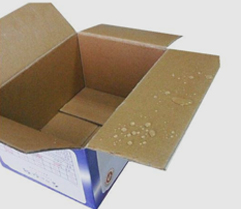
The produce industry uses paraffin-coated cardboard boxes each year to ship fresh fruits and vegetables all over the world.
Wax is used as treatment, coating, laminate and impregnation of primary food contact materials such as paper, board, aluminum. It is used as a lubricant to reduce friction in the manufacturing process. It may also be used to coat food directly, such as in the case of fruit and cheese, in which case it is edible. Waxes may be petroleum based such as paraffin waxes or made of natural material such as beeswax, soy wax or candelilla wax.
Paraffin waxes are a solid mixture of saturated hydrocarbons. They may be mixed with small PE molecules to modify melting points. UV light and heating can lead to the degradation of waxes. Consequently, some antioxidant may be added to improve the functionality. Further, plasticizers and water proofing agents might be added.
Paraffin wax that is used in corrugated packaging and the main application is for food packaging, plant packaging and furniture packaging. Corrugated boxes protected with waxes are three times stronger than non-wax coated corrugated boxes.
Corrugated waxes offer effective moisture barrier to protect the corrugated box or the product inside, improved stacking and dry strength and improved appearance.
Wax Flexible Packaging Waxes
Paraffin and paraffin blends are used to provide gloss, freshness seals, moisture and grease barriers to food packaging.
The key benefits of using waxes are water and water vapour resistance, gas and odour barrier (prevent loss of flavour or contamination), improved process efficiency. Food grade waxes also available.
Can be blended with other additives to improve heat sealability, gloss, block, friction and scuff.